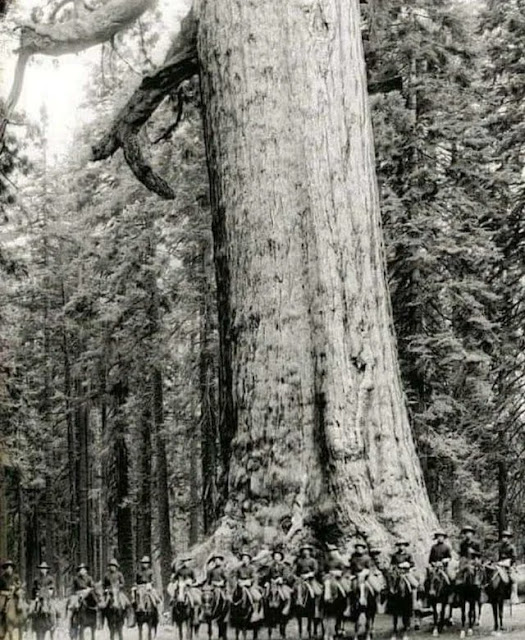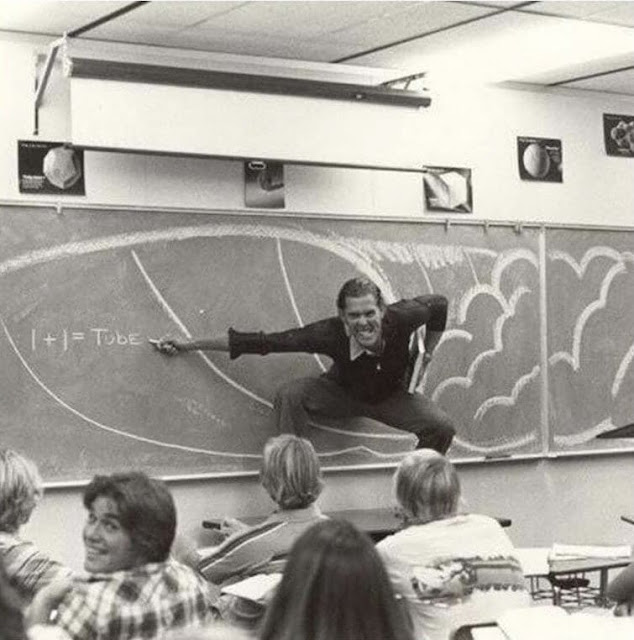Saturday, 4 November 2023
Robert Wilson Patterson
Thursday, 2 November 2023
Bard of Tower Hall
BARD OF TOWER HALL”—Pen-name of Lewis Dela, who was a clothing salesman in the store of Colonel Joseph M. Bennett at 518 Market Street, which, owing to its massive granite front, which pyramided into a Gothic tower, was named “Tower Hall.” In 1857, Dela wrote, in a pleasing doggerel, an advertisement, which through its novelty and human interest, attracted attention. He had a lively, entertaining style of versifying, and for nearly thirty years “turned out” daily, except Sundays, a Tower Hall advertisement in verse. They all were signed “By the Bard of Tower Hall,” and gained a sort of celebrity for the clothing house, which had the reputation of “keeping a poet.” The advertisements, in those days, appeared on the front page of the Public Ledger. A good many persons were of the opinion that Colonel Bennett was the poet, but he denied the “soft impeachment.”
Saturday, 28 October 2023
The White Death, the deadliest sniper who ever lived, 1939-1940
Simo Häyhä was a Finnish farmer who took part in hunting and target practice from a young age. In 1939, the Soviet Union invaded Finland. It began the Winter War or the Russo-Finnish War, and a young Simo Häyhä answered the patriotic call by joining the Finnish army to defend his homeland. Häyhä's home was also close to the border with Russia, which further fuelled his drive to defend his country.
Albert Einstein met Charlie Chaplin in 1931
When Albert Einstein met Charlie Chaplin in 1931, Einstein said, "What I admire most about your art is its universality. You do not say a word, and yet the world understands you." "It's true." Replied Chaplin, "But your fame is even greater. The world admires you, when no one understands you."
Tuesday, 17 October 2023
Capernaum, a city of ancient Palestine
Capernaum, a city of ancient Palestine, on the west or northwest side of the Sea of Tiberias. This place is famous in Christian history, because Jesus often visited it during the time of his ministry, and in its vicinity he delivered the Sermon on the Mount. Nothing of the city now remains.
HENNEPIN
HENNEPIN, en-pari or hen'e-pin, Louis, French Franciscan missionary and explorer in North America: b. Ath, Belgium, about 1640; d. Utrecht, Holland, about 1706. He entered a convent, and being sent by his superiors to Calais and Dunkirk, the stories he heard from the sailors inspired him with a desire to visit distant countries. At length, he embarked for Canada and arrived in Quebec in 1675.
In 1676 he went to the Indian mission at Fort Frontenac, where he visited the Five Nations and the Dutch settlement at Albany. In 1678 he was attached to La Salle's expedition, and, in company with the Chevalier de Tonty and the Sieur de la Motte, was ordered to sail from Fort Frontenac to Niagara, and there construct a vessel for navigating the Lakes above the falls. This accomplished, La Salle joined the party, and on 7 Aug 1679, the adventurers began their voyage on Lake Erie. They passed through Lakes Erie, Huron, and Michigan, to the mouth of the Saint Joseph's River, ascended this in canoes to the portage, carried their frail barks several miles by land to the Kankakee and floated down this stream and the Iroquois to the Illinois, on the banks of which they built Fort Crevecceur near the present site of Peoria.
After a delay of two months at this place, La Salle returned to Fort Frontenac for supplies, charging Father Hennepin with a voyage of discovery to the source of the Mississippi, which had never been explored above the mouth of the Wisconsin. Accompanied by Picard du Gav and Michael Ako, he set out in a canoe on 29 Feb. 1680, followed the Illinois to its mouth, and ascended the Mississippi to the Falls of Saint Anthony, which he was the first European to see, which he named in honor of his patron saint.
This was on 30 April. Arriving at the mouth of the Saint Francis' River, in what is now the State of Minnesota, he traveled by land about 180 miles along its banks, naming it in honor of the founder of his order and visited the Sioux Indians, whom he mentions by the names Issati and Nadouessioux, He stayed with them three months, being, according to his own account, held in captivity, and then, meeting a party of Frenchmen who had come into the country by way of Lake Superior, returned with them to Canada, descending the Mississippi to the Wisconsin, and passing up that river and down the Fox, and so through Green Bay to Lake Michigan. From Quebec he sailed for France, where he published in 1683 his 'Description de la Louisiane nouvellement decouverte au Sud-Ouest dc la Nouvelle-France, etc.,' containing the fullest published account of La Salle's first expedition, a history of his second voyage and of Hennepin's own explorations, with a description of the upper Mississippi. Notwithstanding the writer's vanity and fondness for exaggeration, the work is valuable. He put off his clerical dress in Holland about 1697, but to the end of his life seems to have written himself: "Klt. 1- lect missionary and apostolic notary."
In 1697, 10 years after La Salle's death, Hennepin published his extraordinary 'Nouvelle decouverte d'un tres-grand pays situe dans l'Amerique cntre le Nouveau Mexique et la Mer Glaciale, etc.,' reprinted the next year under the title 'Nouveau voyage dans un pays plus grand que l'Europe, etc' In this work, which embodies his 'Description de la Louisiane,' written anew and enlarged, he claims to have descended to the mouth of the Mississippi and to have been the first European who floated on that river. He gives a description of the scenery, Indian tribes, and distances along the route, with a minuteness that easily gained him credit for veracity, and explains his long silence on this important point by saying that he feared the enmity of La Salle, who had ordered him to follow a different course, and who prided himself upon his own claims as the first who descended the Mississippi to the Gulf of Mexico.
Notwithstanding the utter impossibility of reconciling the dates given in Hennepin's narrative, the story obtained general credence until its falseness was exposed by Jared Sparks. (See 'Life of La Salle,' by Sparks in the 'Library of American Biography'). Consult Saint-Genois, 'Les Voyageurs Beiges du XIII au XIX Siecle' (1S67); Van Hulet, 'Notice sur le Pere Louis Hennepin' (1845); Shea, 'Discovery of the Mississippi' (1852); Parkman, 'La Salle and the Discovery of the Great West'; and especially Winsor, 'Narrative and Critical History of America'
Monday, 16 October 2023
Muck (mook), Karl. 1859
Orchestra conductor and pianist; Avas born at Darmstadt, Bavaria. At Heidelberg and Leipsic he studied philosophy, graduating from the University in Leipsic, studied at the Conservatory for three years, making his musical debut in 1880 as a pianist in the Gewandhaus. He was conductor at Zurich, Salzburg, Briinn, and in 1886 at Gratz. He was director of Neumann’s Traveling Opera Company, and in 1892 at Berlin became conductor of the Royal Opera until 1906, then came to America to conduct the Boston Symphony concerts. In 1899 he conducted German Opera at Covent Garden, and in 1902 he conducted at the Bayreuth Festival.
Thursday, 25 May 2023
Levi's jeans dating back to the 1880s
Discovered in an abandoned mine in New Mexico, a set of Levi's jeans dating back to the 1880s were recently sold at an auction for $87,000. These jeans bear wax marks on the legs, a testament to the original owner's toil by candlelight. With a waist measuring 38 inches and a length of 32, denim historian Michael Harris stumbled upon them in the mine. These pants would have been worn during the gold rush period, and Harris vividly described their condition.
Monday, 6 February 2023
Winston Churchill ‘Operation Unthinkable’ to attack the Soviet Union after WW2
In the spring of 1945, Winston Churchill ordered his Chiefs of Staff to draft, ‘Operation Unthinkable’ to attack the Soviet Union after WW2 ended. "Operation Unthinkable" was indeed a plan drafted by the British military during World War II, in the spring of 1945. However, he was not ordered by Winston Churchill specifically to attack the Soviet Union after the war ended.
Operation Unthinkable was a contingency plan for a possible conflict with the Soviet Union, in the event that the Soviet Union did not withdraw its forces from Eastern Europe, as they had agreed to do at the Yalta Conference. The plan was meant to be used as a last resort if all diplomatic efforts to resolve the issue failed.
It should be noted that Churchill himself did not support the plan and did not actively promote it. He saw it more as a theoretical exercise than a real plan of action. In fact, he described the plan as "unthinkable" and it was never actually put into action.
In conclusion, while Operation Unthinkable was a plan drafted by the British military during World War II, it was not ordered Churchill to attack the Soviet Union after the war ended, and Churchill himself did not support it. The plan was a contingency plan for a possible conflict with the Soviet Union, in the event of a breakdown in diplomacy.
Monday, 21 November 2022
Late 1930s, Marine Drive, the Queen's Necklace
By the mid-1930s, the city had expanded extensively into the newly developed suburbs. Bombay was thus beginning to spread outward in a northerly direction as well as intensify around the core area of the central business district. This intensification was also evident in the form of higher buildings; facilitated by the use of newly introduced construction materials such as reinforced cement concrete (RCC) and ferroconcrete. The modern era had dawned in Bombay.
Coincidentally, around the time of the building boom in the city, an innovative architectural style known as Art Deco percolated through to India from Europe and the USA and manifested itself in Bombay. In many ways, this unique style became symbolic of the last burst of westernization that engulfed the city before India gained independence in the following decade.
A unique combination of factors led to the popular adaptation of Art Deco in Bombay. Tourism and travel had made rapid strides in the period between the two World Wars, resulting in a continuing stream of visitors to Bombay. Many touring European ballets, opera, theatrical and musical troupes were presented at the new hotels and theatres and brought a touch of glamour and new forms of entertainment to the city.
The upper classes and the business community of entrepreneurs and managers happily imbibed contemporary trends in western culture to create a bon vivant lifestyle that symbolized gaiety and color and encompassed western cuisine, dress, ballroom dancing, jazz, cabarets, horse racing, and cinema. The social and cultural ambiance in Bombay was thus suitably conducive to the introduction of Art Deco interiors and architecture.




.png)
.png)







